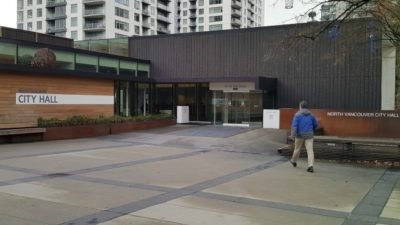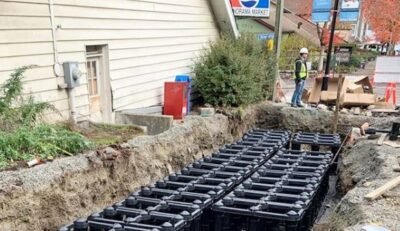By Peter Teevan
There is a battle raging on social media these days, and it’s a battle of ideology over the pace of development in our community. It doesn’t seem to matter that it’s just been a few months since the council election.
The battle began, or at least intensified over the term of the last DNV Council and even though the election seemed to deliver a clear mandate, many don’t seem to want to wait to see how this new Council will steer the “ship”..
The debate largely centres around the same two issues during the election: 1) transportation/traffic congestion and 2) pace of development. The two, for most, appear inextricably linked. Our current Council are spending their time assessing the following: Where did we come from? Where are we now? Where do we want to be going?
So, without the benefit of expert staff, access to all meetings, both in-camera and public, and without access to the most important part – two-way dialogue – let’s attempt to answer parts of those questions.
Where did we come from? Or perhaps specifically, how did we get to this place? The District adopted a new Official Community Plan (OCP) in 2011 that was to guide us through the period from 2010 through to 2030. That plan envisioned (but was clear to not say they were a target) 10,000 net new residential units from 2010 through to 2030. That plan was clear that “This growth may or may not occur over the 20-year planning horizon to 2030 and will depend on market and other forces, including the capacity of infrastructure.”
“If some feel that this Council isn’t doing enough, fast enough it would be wise to consider that “lots and now” is what got us to this point where the citizens, the voters, voted to slow things down and put more thought into “where are we going”.
The challenge at the time the OCP was written was dealing with the effects of gentrification – elementary schools were closing due to declining enrolment and the traffic mayhem that descended upon all routes to the Ironworkers Bridge hadn’t happened until after the OCP was passed. It was largely thought that increased supply would result in drops in real estate prices – both purchase and rental, and that these trends would reverse.
What brought this all into focus? As one who was there, I have to say that the decision to allow eviction of 61 long-term District families from Emery Village to pave the way for mostly market purchase condominiums, and the callous way that the previous Council ignored the pleas of those residents brought clarity to how much the previous Council refused to listen to or care for existing citizens.
There wasn’t a single speaker who said of Emery Village “don’t build it” – rather, every contra speaker asked “please time this project after other rentals have been completed so we can remain in the District of North Vancouver”.
Clearly the current voting citizens of District of North Vancouver were saying to Council that we wanted to see a change in the management of development, so why are some people surprised when the new Council pauses to properly assess “where did we come from, where are we now? and where are we going?”
Where are we now? Well the cost of home ownership has become all but unreachable except perhaps to those of either high-incomes or family help or both. We still have below 2% rental vacancy – construction and real estate costs have continually grown and are out of control. Our elementary schools are now full, mostly as a result of the re-instated class size limits contract terms. And the Ironworkers Bridge now has traffic volume second-only in Metro Vancouver to the new Port Mann Bridge. New government programs such as increased property transfer taxes, new “vacancy” and “school taxes” and the new mortgage stress-tests haven’t yet fixed the market, but they have sure turned the market on its ear.
For the last year citizens and political local politicians have been trying to get a clear answer as to “where are we now” with respect to our OCP. Many, including myself, felt that last year, just 8 years into the 20 year OCP, we already had the estimated 10,000 net new units “in the pipeline” so-to-speak, with “in the pipeline” meaning built, under construction, approved-waiting-construction, before Council for approval, submitted to staff but not yet before Council, and still getting worked but to be submitted in the foreseeable future.
If there are people who decry the few individual decisions that our Council has made thus far, where are they? Are they coming to meetings? Attending the workshops? Have they read all the same materials that Council members need to assimilate into their understandings so they can vote to chart our course?
Well confirmation came following the January 14th Council Workshop regarding the “Pace of Development”. We currently already have more than 10,000 net new residential units “in the pipeline”. These units are represented by over 100 separate projects, 26 of which are currently or will be under construction in 2019 alone. If in the next four years our current Council approves “some form” of those projects submitted, and if it takes maximum five years to build them, then our OCP will be complete two years ahead of schedule and we should receive no new development applications starting now.
Of course, we are not about to do that. Not all the current submissions will be approved, and certainly not in the current form. But it’s a good time to ask where we are at with the “capacity of infrastructure” that our OCP required? What we see are two initiatives: the Lower Lynn Interchange improvements, which are behind schedule, and the promised B-Line and hoped-for Express Bus Services to link to Skytrain. Of course, these projects are transportation only – we also need increased Reccentres, doctors’ offices, medical care, schools, arts venues and parks. It’s also important to ask “how do we manage all this while keeping our community sustainable, healthy and livable?”
Where are we going? This is the question our new Council is tasked with answering. There are many who feel that the previous Council was not paying enough attention to the questions above. So many such that we increased the numbers of voters by more than 50% over the last election, and our new Mayor, asking this very question, won a mandate with over 2 ½ times the votes of the next closest mayoral candidate.
Clearly the current voting citizens of District of North Vancouver were saying to Council that we wanted to see a change in the management of development, so why are some people surprised when the new Council pauses to properly assess “where did we come from, where are we now? and where are we going?”
So as a first set of steps our new Council undertook the following actions:
- They engaged with professional facilitators to garner input from all elected to Council in order to draft a strategic plan for this Council – the findings and recommendations from that process are hoped for soon.
- They engaged with staff and the public in a series of workshops: Pace of Development (Jan 14), OCP Update (Jan 28), INSTPP (Traffic Planning) (Feb 4), Housing Affordability Definitions (Feb 11), OCP Update – 2 (Feb 12), District Owned Lands, Role of Approving Officer (Feb 26), OCP Update – 3 (Mar 4), Infrastructure and Amenities (Mar 5), CEEP (Community Energy & Emissions Plan) (Mar 11), Discussion on Delbrook Lands (Mar 12), and Housing Affordability Definitions (Apr 1).
- This has resulted in a decision at the regular meeting of Council on April 1st 2019 to create a new “Rental, Social and Affordable Housing Task Force” which will help Council with recommendations for action going forward.
If some feel that this Council isn’t doing enough, fast enough it would be wise to consider that “lots and now” is what got us to this point where the citizens, the voters, voted to slow things down and put more thought into “where are we going”.
As to the pace of meetings, in most cases it is the same team of staff members who need to study, prepare and present the materials to Council at these workshops, and then to take direction from Council on the next steps.
If there are people who decry the few individual decisions that our Council has made thus far, where are they? Are they coming to meetings? Attending the workshops? Have they read all the same materials that Council members need to assimilate into their understandings so they can vote to chart our course?
If the answer to all those questions is “yes”, then by all means, decry away. But if not, try coming to a meeting or two. Sit down between Thursday night and Monday night and study an 800 page agenda package and then be ready to offer thoughtful commentary before Council on a Monday night. I will see you there.
Peter Teevan is the vice-president of Seymour Community Association and ran for a seat on DNV council in the recent elections







Comments
NOTE: The North Shore Daily Post welcomes your opinions and comments. We do not allow personal attacks, offensive language or unsubstantiated allegations. We reserve the right to edit comments for length, style, legality and taste and reproduce them in print, electronic or otherwise. For further information, please contact the editor or publisher, or see our Terms and Conditions.